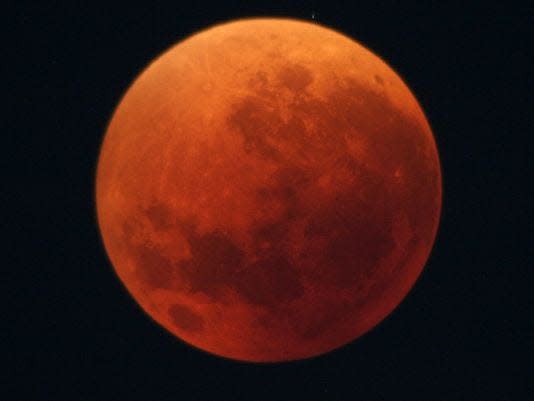When is the next full moon? Everything to know about the Beaver Moon in November 2023
November's full moon will shine in the night sky toward the end of the month. Called the Beaver Moon, here's everything you need to know about when and how best to see it.
When is the full moon in November 2023?
The next full moon will appear Monday, Nov. 27, 2023, when the moon is fully illuminated and opposite the sun in its orbit around Earth.
This full moon is also a partial lunar eclipse, according to the experts at NASA, an imperfect alignment of the sun, Earth and moon that results in the moon passing through only part of Earth's umbra.
When are the phases of the moon in November 2023?
The moon's phases in November are as followed:
Last Quarter: Nov. 5.
New Moon: Nov. 13.
First Quarter: Nov. 20.
Full Moon: Nov. 27.
Why is it called the Beaver Moon?
The Beaver Moon takes its name from early Native American tribes as well as American colonists, according to the Old Farmer's Almanac, when beavers begin sheltering in their lodges after gathering enough food to last the winter. Fur trappers, the almanac stated, used this time also to hunt beavers for their pelts.
When is the best time to see the full moon in November 2023?
For all you selenophiles out there who don't mind waking up super early, the peak illumination time for November's full moon happens well before 6 a.m.
According to the Old Farmer's Almanac, the moon will be at its brightest around 4:15 a.m. on Monday, Nov. 27. If you don't feel like getting up that early, the Beaver Moon will be very close to full beginning Sunday, Nov. 26, just after sunset.
Mark your calendars: Hoosiers have less than 4 minutes to see this rare total solar eclipse in 2024
Moonrise for the Indianapolis area on Monday, Nov. 27 should happen at around 5:23 p.m., crossing the Meridian at 12:21 a.m. and setting at 8:09 a.m. Tuesday.
Why does the moon sometimes appear red?
You may have noticed the moon will occasionally take on a dramatic shade of orange or red in the night sky. That's because of how sunlight strikes the moon's surface after passing through our atmosphere.

When the moon moves into the inner part of Earth's shadow, or umbra, according to NASA, some of the sunlight entering Earth's skies scatters before reaching the moon's surface.
Colors with shorter wavelengths, such as blues and violets, scatter more easily than colors with longer wavelengths, which include red and orange. The more dust or clouds in Earth's atmosphere during a lunar eclipse, the redder the moon appears.
When is the next full moon in 2023?
There's only one full moon left this year — the Cold Moon. You can spot it in the sky the day after Christmas on Dec. 26, 2023.
Almanac
Embedded content: https://www.almanac.com/sites/default/files/styles/or/public/image_nodes/full-moon-names-padding-2400px.png?itok=EXGfrJUC
Rats!: Where Indianapolis lands on this cringe-worthy Orkin list
John Tufts covers evening breaking and trending news for the Indianapolis Star. Send him a news tip at JTufts@Gannett.com.
This article originally appeared on Indianapolis Star: Full moon: Everything to know about the Beaver Moon in November 2023


